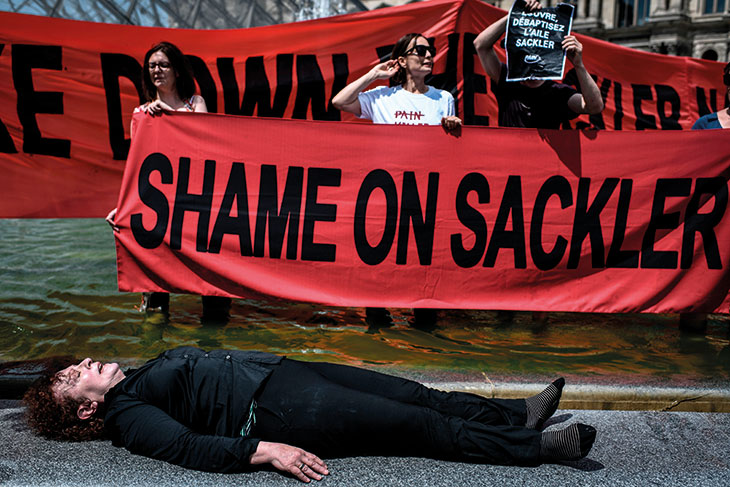The American philanthropic system rewarding private support with tax deductions has long traded donor recognition for major gifts. The presence of prominently engraved names is routine on the facades of museum buildings, gallery entrances, and even public restrooms. State-supported cultural institutions, including those in the UK, were once less dependent on this form of acknowledgement, but the trend has accelerated since the Sainsbury Wing at the National Gallery opened two decades ago.
The exchange of visibility for cash is now increasingly fraught, as revelations of the alleged or documented transgressions of the wealthy abound in social media. The resulting glare is sure to have a dampening effect on future donations from individuals or families whose wealth derives from practices today considered unethical or otherwise problematic. Museums and boards with ties to fossil-fuel companies, for instance, have long been targets of criticism – but protests that once focused on institutions have now become personal, singling out individual executives and the well-to-do.
A simple but startling form of self-empowerment came into being in May 2019: an online spreadsheet titled the ‘Arts + All Museums Salary Transparency 2019’, which revealed self-reported salaries – paltry for the most part – across dozens of US art museums. This humble spreadsheet was in effect a declaration of independence from a culture of courtly intimidation. Emboldened by such acts of advocacy, critics spoke out with less fear of recrimination, and the genteel veneer of art museums was forever cracked. Previously whispered condemnations of privilege and excess were suddenly audible everywhere.
The salary spreadsheet appeared months after artist Nan Goldin led protests against the Sackler family’s support of museums, funded in part from the addictive drug OxyContin. The Harvard Art Museums, Guggenheim, Metropolitan Museum of Art, National Portrait Gallery in London, the Freer-Sackler Galleries at the Smithsonian and the Louvre were all publicly shamed.
Protests outside and inside the Whitney Museum in 2019 led to the resignation of its trustee Warren B. Kanders, CEO of Safariland, a manufacturer of law enforcement and military supplies. More recently, a spate of unionisation has transformed museum workplaces from Boston to Philadelphia to the Whitney, New Museum, and Guggenheim Museum in New York, with union drives spreading westward to the Art Institute of Chicago.
The latest concession to protest is the Met’s decision to remove public acknowledgement of donations from the museum’s seven spaces bearing the Sackler name (and only of Raymond and Mortimer Sackler and their heirs). The change is literally superficial, since there is no talk of sending money back to the Sackler family.
Museums are nonetheless on notice on multiple fronts – not simply about the extent to which their wealth has been derived from dodgy donors – but also about how they pay people, whether excessively at the top or inadequately at the bottom; the degree to which their staff, board, public and programmes reflect the demographics and concerns of the diverse communities in which they are situated; and their commitment to preserving collections, as some directors claim financial woes in order to monetise objects at auction, even as their endowments have swelled through the pandemic and their lead donors have made extraordinary gains.
Lustrous museums born of strike-breakers, robber barons and despoilers of the environment like J.P. Morgan, Andrew Carnegie, and Henry Clay Frick, seem to be insulated from renaming or shaming because so much time has passed that their transgressions seem remote. But new money brings newer problems. It is also possible that the relative insulation of older institutions from criticism might be challenged in the future.
Given the growing practice of singling out donors, museums will become a more cautious sector, with the backgrounds of contributors under constant scrutiny, and a nervous watch for aggrieved placard-bearing people on the front steps. One partial solution would be for museums to align the investment policies of their endowments with their stated values, and so recycle tainted donations. Most index funds are rife with companies clearing the rain forest, exploiting workers, and other toxicities aplenty. Despite being founded with assets derived from the oil industry, the Rockefeller Foundation divested from fossil fuels in 2020. But major museums have yet to follow suit.
Maxwell L. Anderson is president of the Souls Grown Deep Foundation and Community Partnership.
